On Utopias and Their Failure: In Conversation with Korean Artist Lee Bul
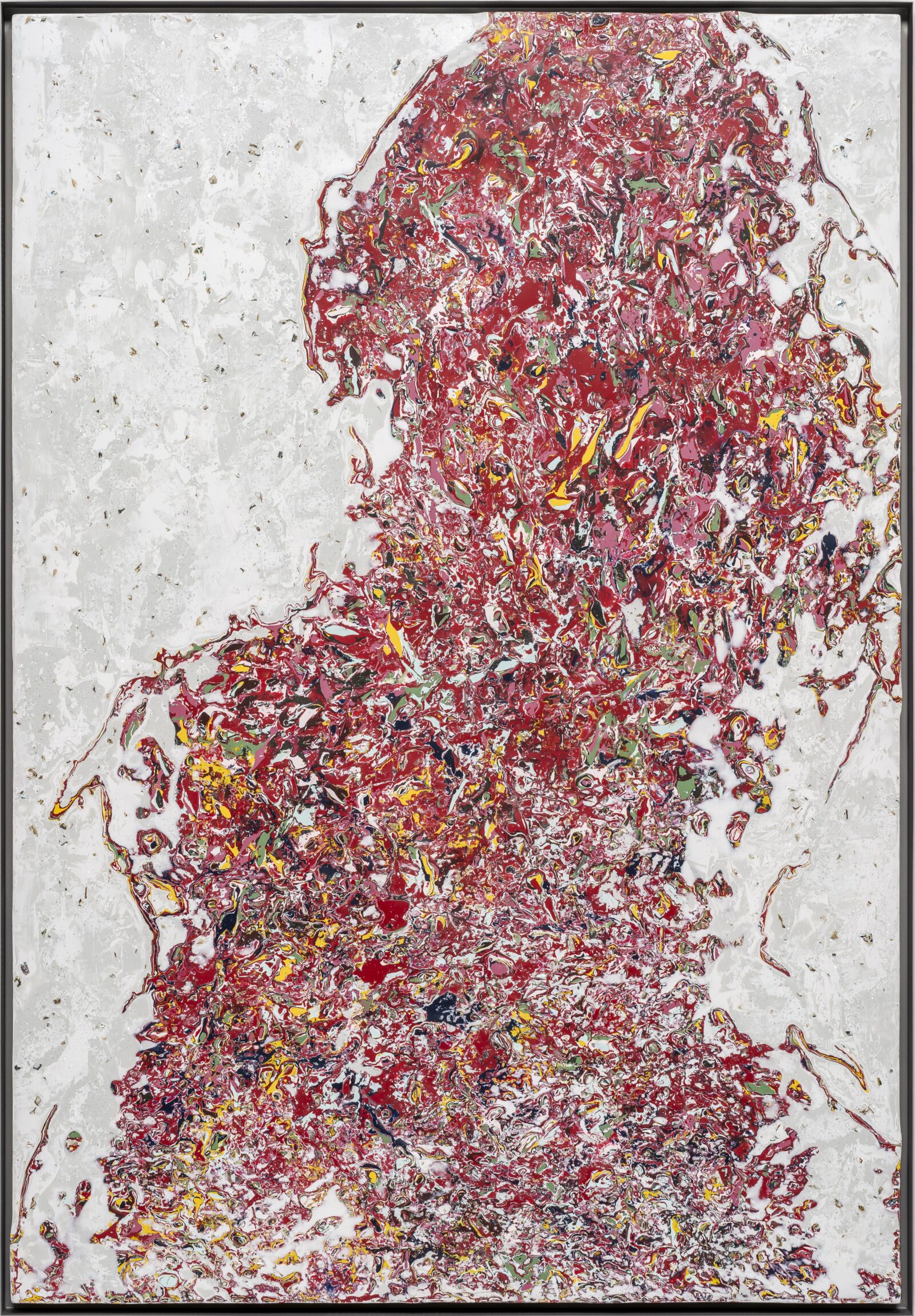
Valentina Buzzi is an Italian Ph.D researcher, lecturer and art…
“Every conception of utopia, historically, harbours the contradictory seeds of its own disintegration. It speaks of its own impossibility.”
—Lee Bul
At the beginning of this year, Thaddaeus Ropac presented over 20 of the most recent works of Korean artist Lee Bul in the Paris Marais gallery. Known for her thought-provoking practice, the artist has endlessly investigated the meanings of being human in a multifaceted manner, highlighting recurrent trans-historical themes of humanity’s idealistic dreams and their ambivalent failure.
The micro and macro declinations of Lee Bul’s ongoing research are explored in the Parisian exhibition through the two-dimensional works of the Perdu and Velvet series. The Perdu works exemplify the artist’s approach by bringing together past, present and future temporalities, evoking universal themes of memory and nostalgia. Aesthetically, they strongly connect with the renowned Cyborg series, which looks at the interaction between organisms and technology. In a complementary manner, the Velvet series investigates the historical dimension of humanity, creating phantasmagorical landscapes that incorporate concepts of place, time, and utopian futures.
In both series, as well as in Lee Bul’s overall practice, the choice of material is important and never casual. The use of the mother of pearl and silk, in particular, is linked to the exploration of vulnerability, duality and ambivalence that is at the centre of the artist’s work.
Widely acknowledged for her ground-breaking practice, the artist has previously exhibited in leading institutions such as The Museum of Modern Art and the New Museum in New York, Leeum Museum in Seoul, Gropius Bau in Berlin as well as the Venice Biennale.
We sat down for a conversation with Lee Bul and discussed the exhibition, her artistic process, the importance of utopias and their failure, and the condition of being human.

Throughout your entire body of work, you have always examined the condition of being human or perhaps being human in the world, from a personal scale to a universal one through different media, lenses, practices and themes. Where do you stand in your artistic investigation and practise these days and how is that reflected in the two series exhibited at Thaddaeus Ropac?
Not only these days, but probably for my entire life, I have tried to understand our world. People who come to see my shows may think that I change the themes, focus or subjects very quickly, but I don’t think about my ongoing practice as changing, rather as an ongoing journey. Every day our life is exactly the same: we struggle to focus on one thing, as life itself is layered. We struggle to understand what we are and what we are doing here, and this is what my whole work consists of: trying to understand.
For this exhibition, I have brought the Perdu series to Paris for the first time, but I have been working on these works for 4 or 5 years. The Perdu series needs to be shown together with the Velvets. They may appear very different, but they should be shown in relation to one another, because they approach my research from two opposite yet complementary directions: one is micro, and the other is macro. One is about DNA, the other looks at history: they complete each other.
In both the Perdu and Velvet series you use a peculiar material, mother of pearl – which in the Velvet series is combined with, among others, silk. You often state that your materials are chosen very carefully. Could you tell us what, in this case, you want to convey through these precise choices, and their role in the process of producing these paintings?
Both mother of pearl and silk are organic materials, and they have a beautiful story of their own. Whereas the refraction, colour, and beauty of mother of pearl comes from pain, silk protects the caterpillar before it transforms into a butterfly. In my paintings, I mix both with acrylic, so conceptually they remind me of the idea of technology within an organism, like the Cyborg series.
Even if I don’t show the cyborg form in the Perdu works, there is a clear continuity with my other research. (…) I don’t choose the exact shape of each work: sometimes I do it consciously, but the very final form is hopefully led by my imagination.
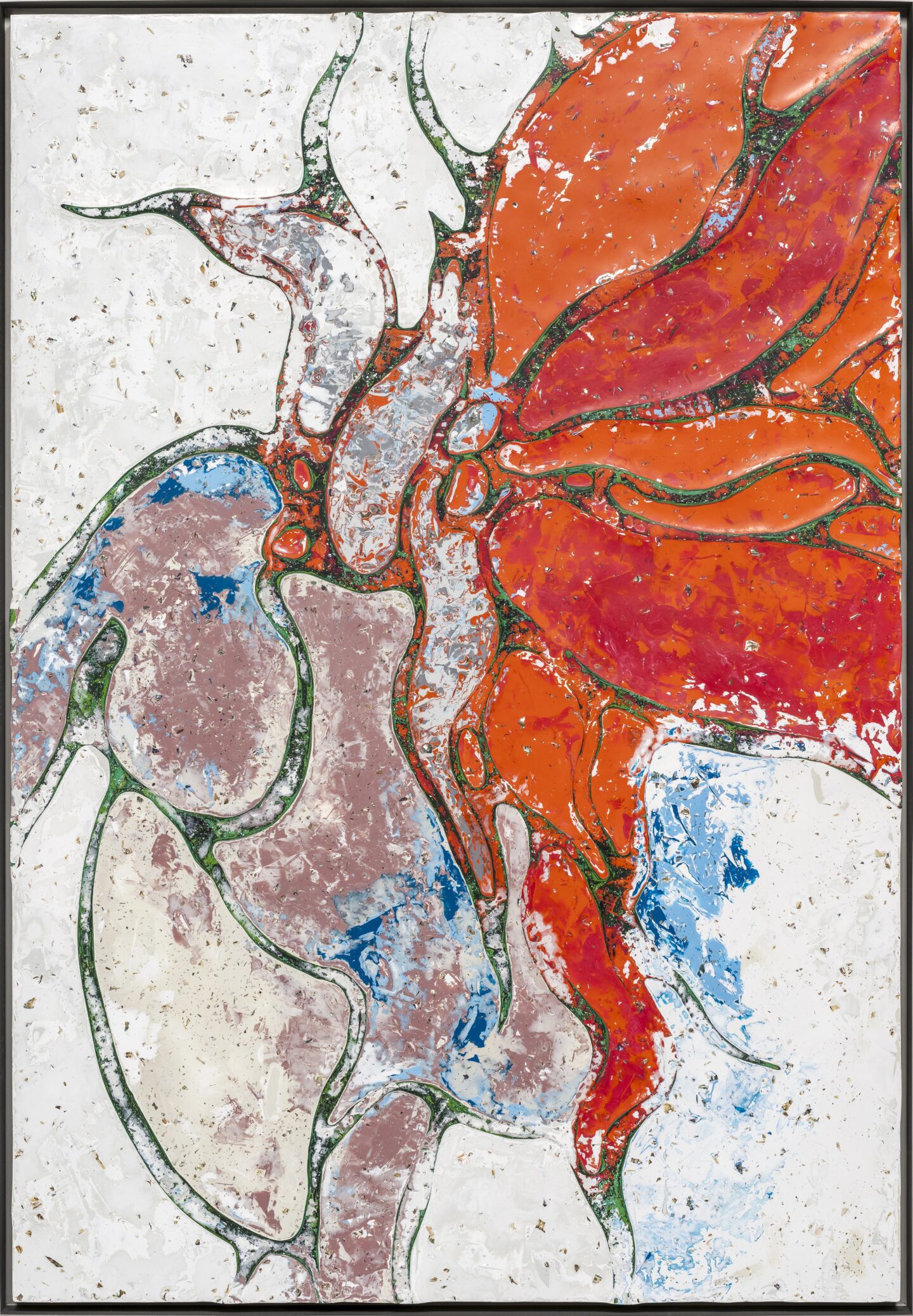
panel, steel frame, Framed: 163 x 113 x 6,5 cm (64,17 x 44,49 x2,56 in)
(LEB 1142) (c) Courtesy of the gallery
Both series can be seen as landscapes that have been approached in very different ways. For the Perdu series, the whole process can be related to archeology: you can see the layers of paint through sanding, like those you can see in the earth during the excavations. The Velvet series, on the other hand, evokes a different type of landscape, with a perspectival view that shows at once all periods and all times.
Today we, as a society, are becoming increasingly open. Even if we still misunderstand geographical boundaries, we have developed histories and analyses that no longer focus on a single rule or approach. I therefore believe that looking at my work only through an Asian lens – linking it to the use of certain traditional materials, for example – is no longer as relevant. For instance, if you think about my use of the mother of pearl: today this material can be found everywhere. It thus becomes an invitation to look at my work in a more universal way.
Among the works presented on the ground floor of the gallery – which focuses on the Perdu series – there are two paintings whose shapes are notably different from the others, referring to Perdu CXXIII and Perdu CXXV. Do they hold a particular meaning?
The two slightly different Perdu paintings on the ground floor look more figurative and their purpose is to lead the audience upstairs to guide the visitor through the exhibition. I tried to design the exhibition very carefully for the audience: for instance, upstairs there is a small Perdu painting, very simple and almost monochrome. It creates continuity from the ground floor to the upstairs. I hope the audience can enjoy this journey I created for them.
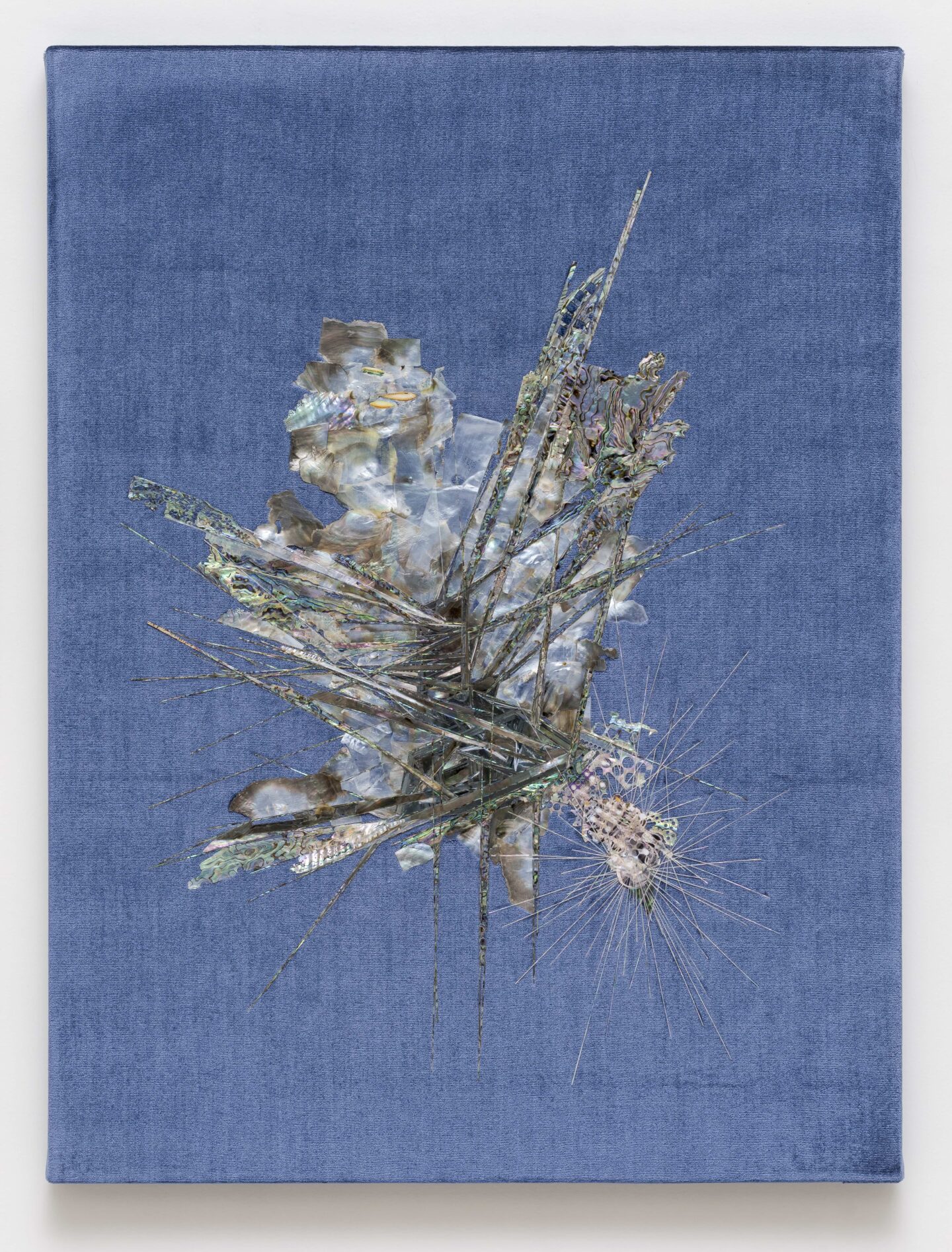
in) (LEB 1158) (c) Courtesy of the gallery
It’s often said that the chosen technique or medium influences one’s creative possibilities and exploration. We are familiar with your large-scale sculptures and installations. In the exhibition at Thaddaeus Ropac in Paris we see paintings and/or bi-dimensional small(er)-scale artworks. Could you tell us more about this choice of medium?
Both the Perdu and the Velvet series have been ongoing for several years, and I continue to make sculptures at the same time. However, sometimes our environment becomes different, especially during the pandemic: at my studio, there is a big team behind the production of every large-scale work, and during the pandemic the working conditions were very difficult. So, I decided to focus more on small-scale works such as the two series presented at the gallery.
Does the choice of colour in the Perdu series hold any particular meaning?
Sometimes it does, sometimes it doesn’t. In my studio I usually make countless colour palettes: every colour has a code and I like to play with them and create new combinations. Sometimes, after creating palettes, I name them, giving them a time-based subject: for some pieces I want to frame an idea of the present, for others I choose a particular moment in time, such as 1950s pop or romantic paintings. But not always, it really varies.
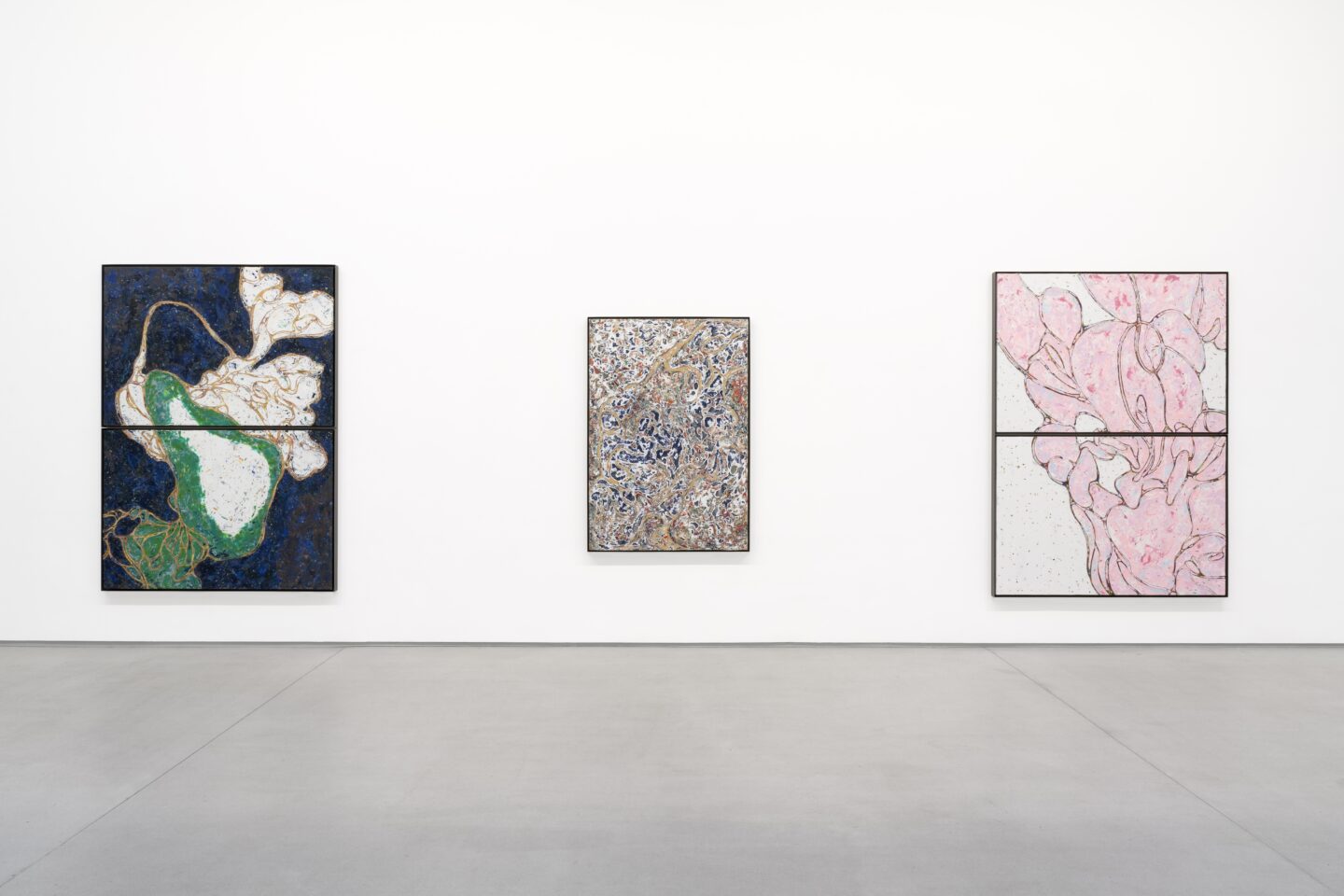
The Velvet series is also named “willing to be vulnerable.” Which meaning does vulnerability hold in these works?
I hope that the concept of “vulnerability” can have a meaning that is as wide as possible for the audience. I chose the title for the series on occasion of my show at the Sydney Biennale, before this pandemic. And I took that title from an advertisement for the circus, while wanting it to have a deeper meaning about our life.
At the time, some of my friends were asking me “why is it about vulnerability?”. Now they know what it is, and it holds a very deep and strong meaning for them as well. I believe that language is all about change, and some periods and some conditions contribute to our understanding of a specific word, and the meaning we attribute to it.
Could you tell us more about the references to architecture in the Velvet series, as they relate to constructivism and modernism, and their link to the concept of utopias, which is very present in your work?
I have an interest in utopia as a concept, but I don’t necessarily want to express a vision of utopia. Rather, I am interested in our ability to dream, to plan, to have ideas, and in the process of how we try to realise those dreams. At the same time, I am interested in their possible failure. I am not criticising utopias, my vision doesn’t have only negative connotations. It is more an understanding of the similarities between utopias and the destiny of humans: we always repeat new dreams.
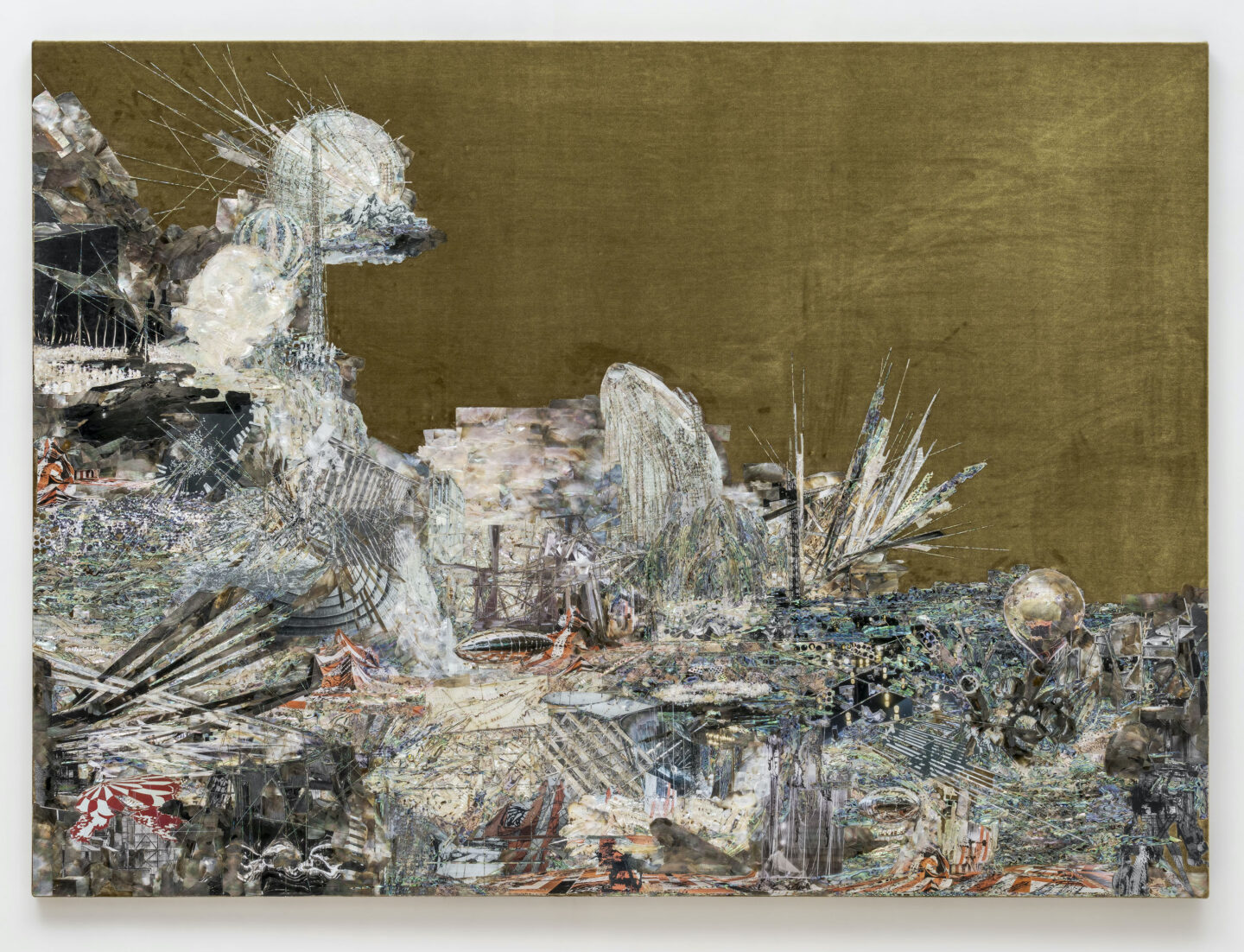
4,72 in), (LEB 1155) (c) Courtesy of the gallery
The architectural inspiration for your work reminds me of Russian constructivism, which is interesting in relation to what we just discussed. These architectures also represent a utopia, and their ruins contain perhaps strong links to the vision of history and humanity that can be found in your work.
I just remembered that I had a solo show in Saint Petersburg in Russia in 2020 and I saw local modern and contemporary art including Russian constructivism. To my great surprise I found a very interesting work, which had the same title and the same references as mine: “Civitas Solis”. The work is about architecture and is made of several paintings, totally different from mine but with exactly the same title.
On the second floor at Thaddaeus Ropac you have exhibited a sculpture on a smaller scale of Aubade V, whose large-scale counterpart was shown at the 2019 Venice Biennale where you represented South Korea. Part of the material is cast steel collected from a demolished checkpoint in the demilitarised zone between North and South Korea. The military as a concept is part of your research, but it surely holds a specific meaning as a Korean. Could you tell us more about this artwork?
As you may know, a few years ago the government decided to try to destroy the DMZ checkpoints, so I collected steel from the scraps of their first destruction and then assembled it with other metals into a tower named “Charlie”. To create the artwork, I had a very complex and meticulous plan, which brought together multiple components, each with several references attached to them:
First, I created the seven asymmetrical parts of the standing structure, which could not be symmetrical. In each of the spaces in between the panels, there are symbols in morse code and the international code of signals. In the upper section there is the flag with the colour for international communication, and below it are six letters which spell out the name “Charlie” – a word that is part of the international communication code system. When they use “Charlie” or simply “C” in the military, it means “positive” or “yes”. That’s where the name of the tower comes from. It is interesting, however, how the signal is very weak, repeatedly turning on and off.
In the middle section there are some LED panels: from the outside you can make out a sort of digital shape, whereas on the inside there is a text about our planet. As you may know, the earth revolves around a specific axis with a specific angle that is defined by gravity. Over the next million years the angle of the axis will move.
Each panel has a different structure, mechanism, and pattern, so the result is that the tower looks different from every angle.

It is a very complex artwork, but that’s my style. And I don’t think that the audience minds. When I try to create something, I research and research and research…but in the end, after I stop working on it, the work acquires its own life. When someone has an interest in my work, they can read or hear about the story, and at other times they can just find a link to their own life. It is impossible to control the interpretation of your work, and it’s often interesting to see what the audience thinks about it.
Your idea of utopia is elegiac, almost sorrowful, and led us to think about the concept of nostalgia for the future and to wonder about your relation and understanding of the concept of time.
I still don’t know if I understand it or not. Sometimes time is almost darkness for me, like a black hole, but at other times it is so present and so clear…I am standing between these two distances, and I am trying to figure it out. I can almost feel it sometimes, but I will probably never be able to catch it. In the end, I don’t think I want to understand time, rather I want to feel, and swim through it, if that’s possible.
And yet time as a subject is very interesting, as is its relation to space, because time and space are not separate. The idea of “timelessness” or of a really long time, such as the notion of history, is part of my work. What I mainly focus on is the modern period because it is very limited and familiar to me. Most of the concepts of our era have been invented already, so they are easily communicable.
What's Your Reaction?
Valentina Buzzi is an Italian Ph.D researcher, lecturer and art writer based in Seoul, South Korea. She works in collaboration with different art magazines and cultural institutions across Italy, South Korea and the United States in order to share insights from the Korean cultural scene with western audiences and to promote cross-cultural pollinations. Her academic research spans at the intersection between art, cultural studies and cultural policy, with a focus on the symbiotic relationship between art and society. Valentina earned a BA in Art History at IULM University (Milan) and an MA in Cultural Policy at Warwick University (UK).


